Issue No. 11
Five key lessons I wish I had known early on in my SaaS journey
Five lessons I wish I knew early on: Reach > Product, Product Velocity or Die, You Are Not Your Customer, You Have One Shot, Maximize Time to Value, & Churn is the Hidden Killer
Reading Time: 4 min
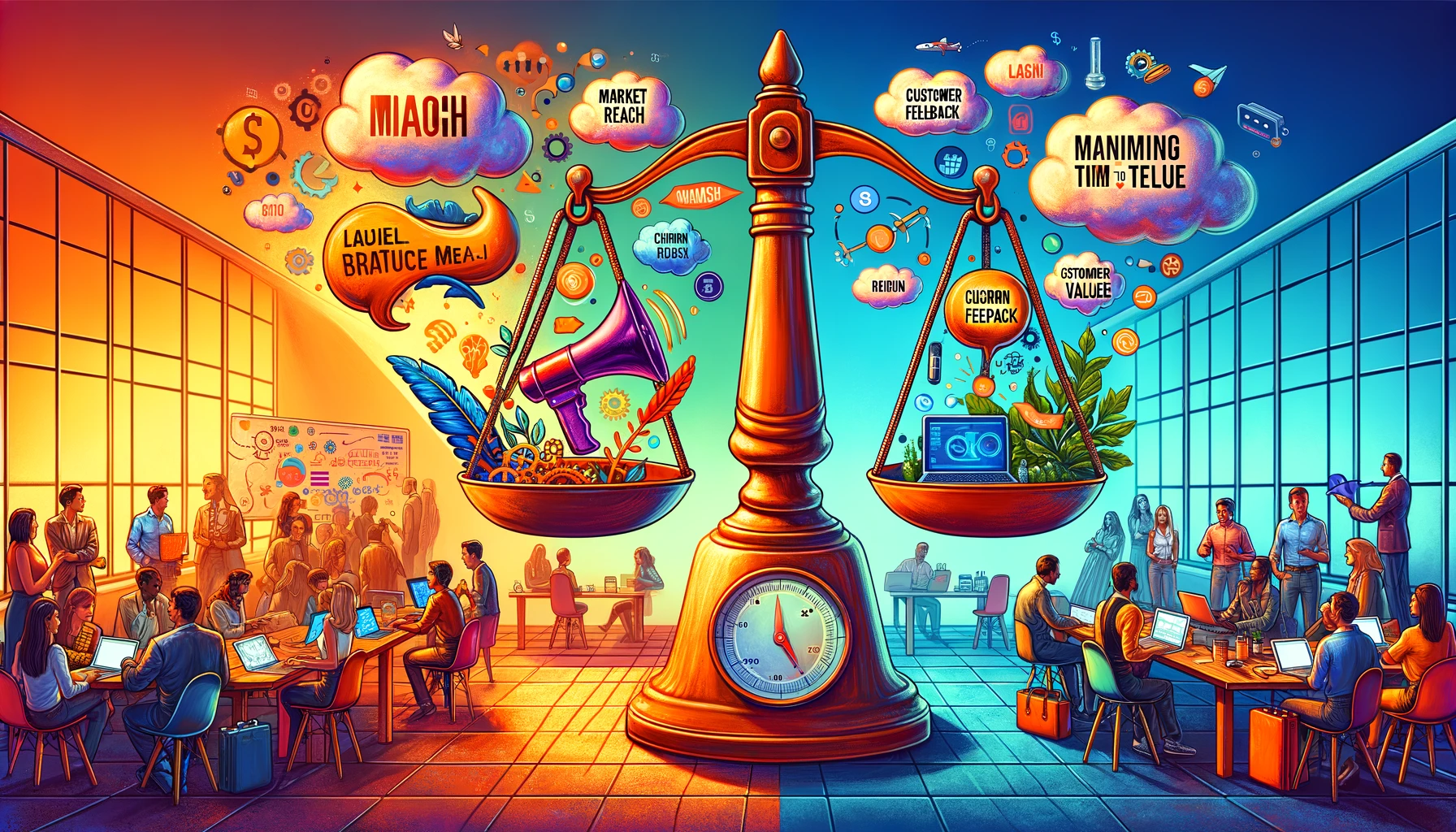
Source: DALLE, told to extract key phrases from this newsletter, create a prompt and using the style illustrative, colorful, futuristic create an image.
This week’s topic is five key lessons I wish I had known early on in my SaaS journey.
What you’ll learn this week:
- Reach > Product
- Product Velocity or Die
- You Are Not Your Customer
- You Have One Shot, Maximize Time to Value
- Churn is the Hidden Killer
Enjoy!
Reach > Product
There’s got to be a million memes about startups failing to think about how to reach their market and only focusing on building. Here’s the one I saw most recently.

Heck, this is my own story!
Early on, I was afraid to self-promote (aka market) my first launched startup (web hosting, it was the 00s, and everyone was doing it). Thinking as a solopreneur, I was a fake company.
Nothing was further from the truth. I saw people bypass my first startup who were faking it more than I was. I knew their web hosts were held together by a shoestring and prayers. But they were growing rapidly, and my growth could be confused for a level.
What was the difference? They were promoting like crazy.
My service was superior in a few ways. But the truth is. None of those mattered. Because for “reasons,” I wasn’t willing to put myself out there and take risks.
Lesson to Learn — Before you launch, be marketing. Get that landing page up. Engage with your target audience. I highly recommend you read the book “Traction” by Gabriel Weinberg and Justin Mares.
Product Velocity or Die
Every early startup has a superpower.
The ability to rapidly respond to customer feedback.
Maybe it’s a bug, a missing feature. Who knows. But the ability to ship a new feature in days (or less!) allows you to connect with a customer.
But that same superpower has a trap many indie hackers fall for.
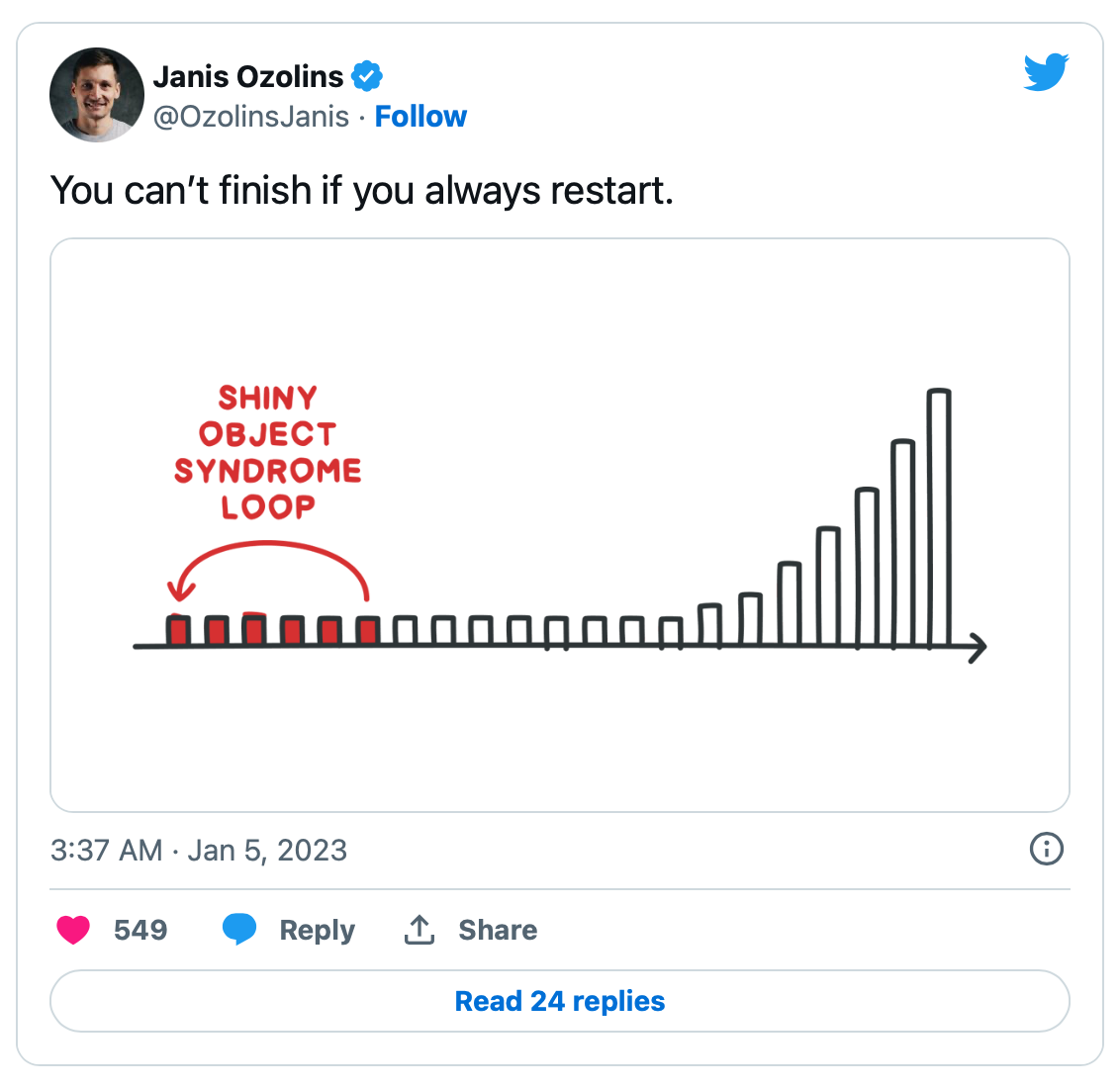
Maybe it’s a new framework. Or you started your project, and your framework shipped a major new version (which has happened to me). Or you’re working on a great idea and GPT-4 drops.
Either way, Janis has it right. You’ll never finish if you always restart.
Lesson to Learn — Focus on shipping CUSTOMER value.
You Are Not Your Customer
There’s a phrase I love that I think applies deeply to building a great SaaS product.
There are unknown unknowns — Donald Rumsfeld
Unfortunately, we often think we know what the market wants. When we don’t. We had this great idea. It gets initial traction because of its novelty, a new tech approach, great design, etc.
But then it hits a wall.
And growth stalls.
This plateau is entirely normal. The reality is your customers see your solution to a problem they have. And for many solutions, your software could be used in multiple ways.
This is why we talk about pivots in the startup world.
Brian Casel of Clarityflow (formerly ZipMessage) recently shared about this phenomenon. I’ll let you see what he did about it.
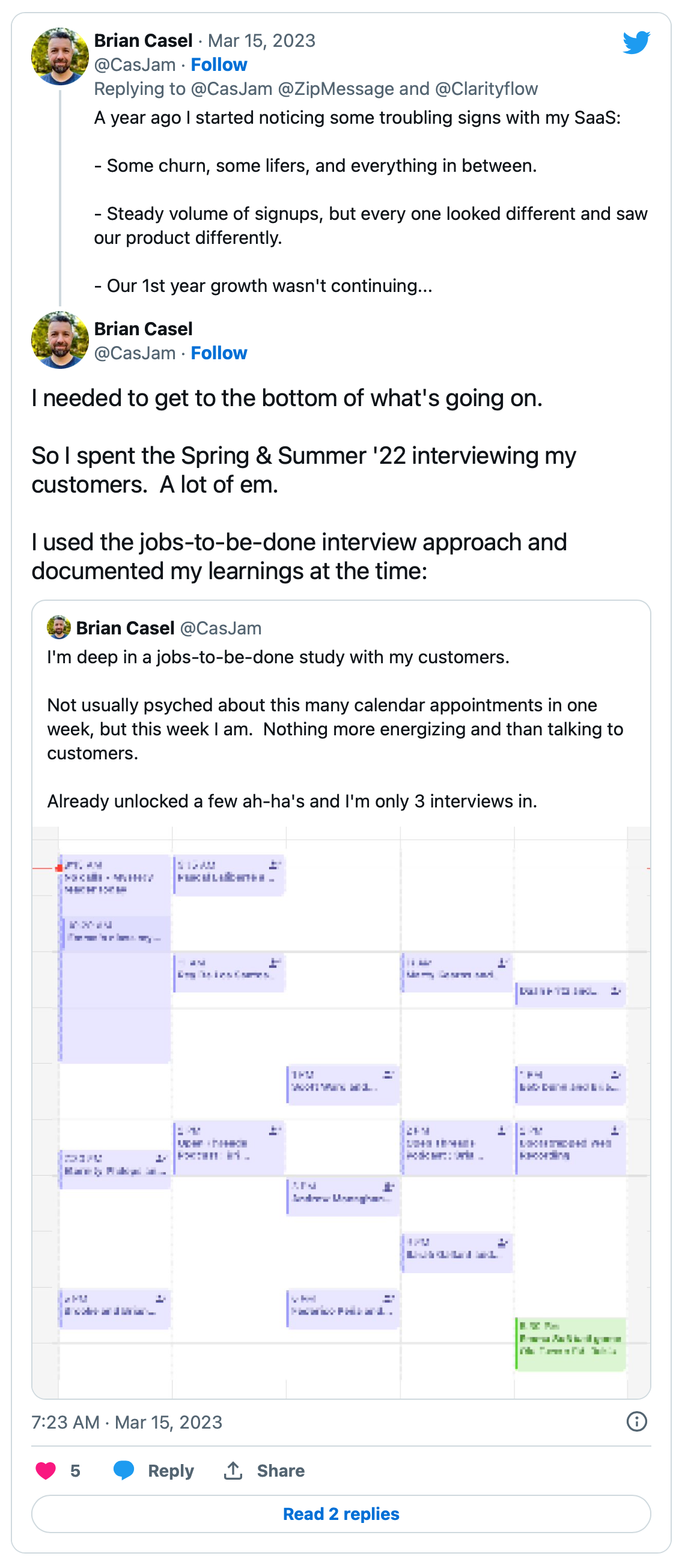
The key to his new growth is that he talked to his customers (I’m highly confident he will see a LOT of growth from this pivot).
Doing so, he realized his initial vision wasn’t what his best customers had.
Lesson to Learn — Build a culture of customer engagement. Always be talking to customers. I’m a big fan of Jobs to be Done as a methodology to help interview customers and a framework to sort out what they’re telling you.
Warning — Don’t get caught up in analysis paralysis. You can learn a lot with just a bit of feedback, analysis, and instincts.
You Have One Shot, Maximize Time to Value
To quote the poet Eminem.
If you had one shot, one opportunity, to seize everything you ever wanted? One moment. Would you capture it or let it slip? — Eminem
I’m pretty sure he was talking about SaaS onboarding.
Right?
Maybe not, but many of us let prospects slip by driving up our Cost of Acquisition (CAC). We do so with poor onboarding experiences. Experiences that don’t get users to the “Ah-ha!” moment you’ve painstakingly built for them.
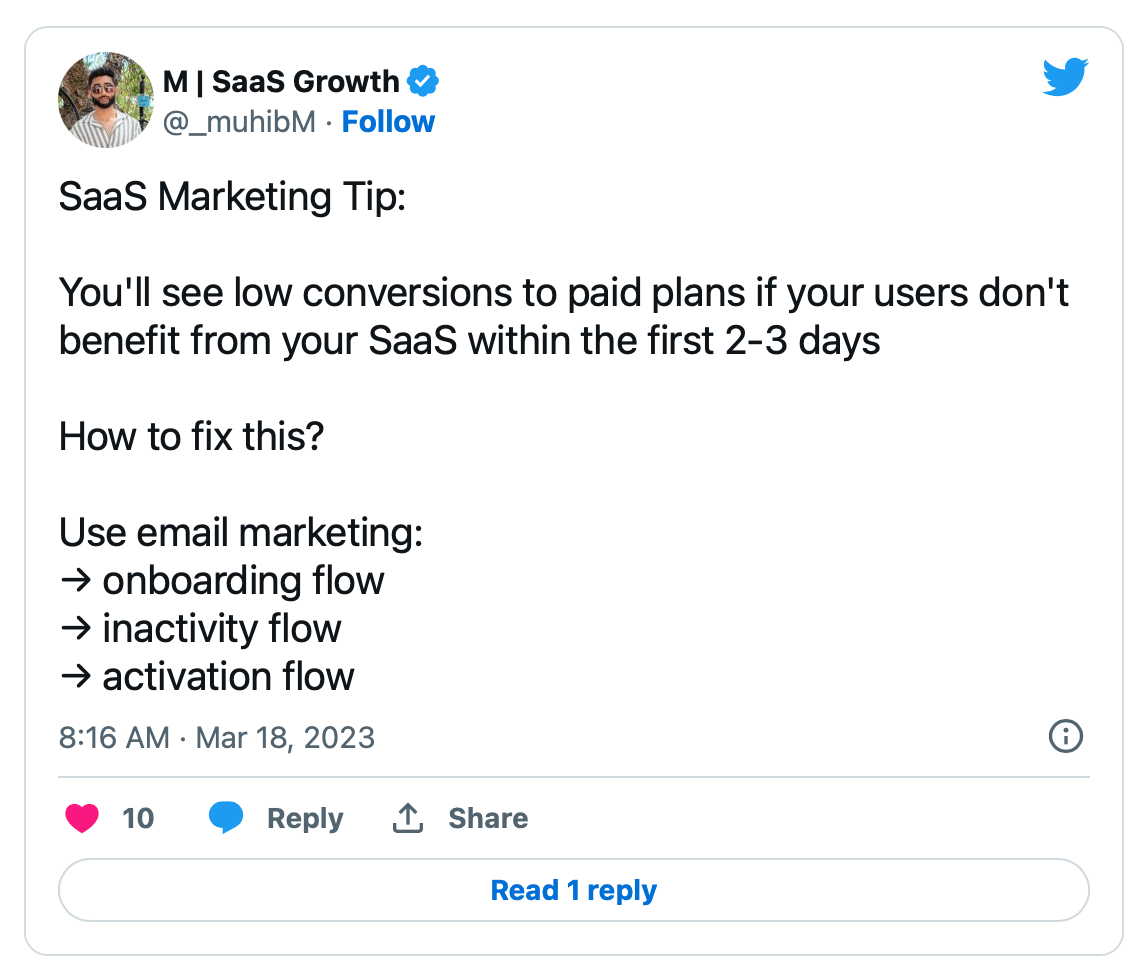
Lesson Learned — Prospects have short attention spans. Optimize time to value. Don’t ask for what you don’t have to. Assume when you can.
Warning — Are you sure you know your “Ah-ha” moment?
Churn is the Hidden Killer
In the startup world, the #1 metric I see people talking about is recurring revenue (MRR or ARR). But hidden within that metric is an often ignored or dark underbelly metric. Sucking the life out of your startup.
Churn.
In reality, churn is inevitable, especially early in a startup’s life. Churn is a strong indicator of product market fit. If you have high churn, the market tells you something is amiss.
So given that, what’s an acceptable rate of churn?
These numbers may surprise you.
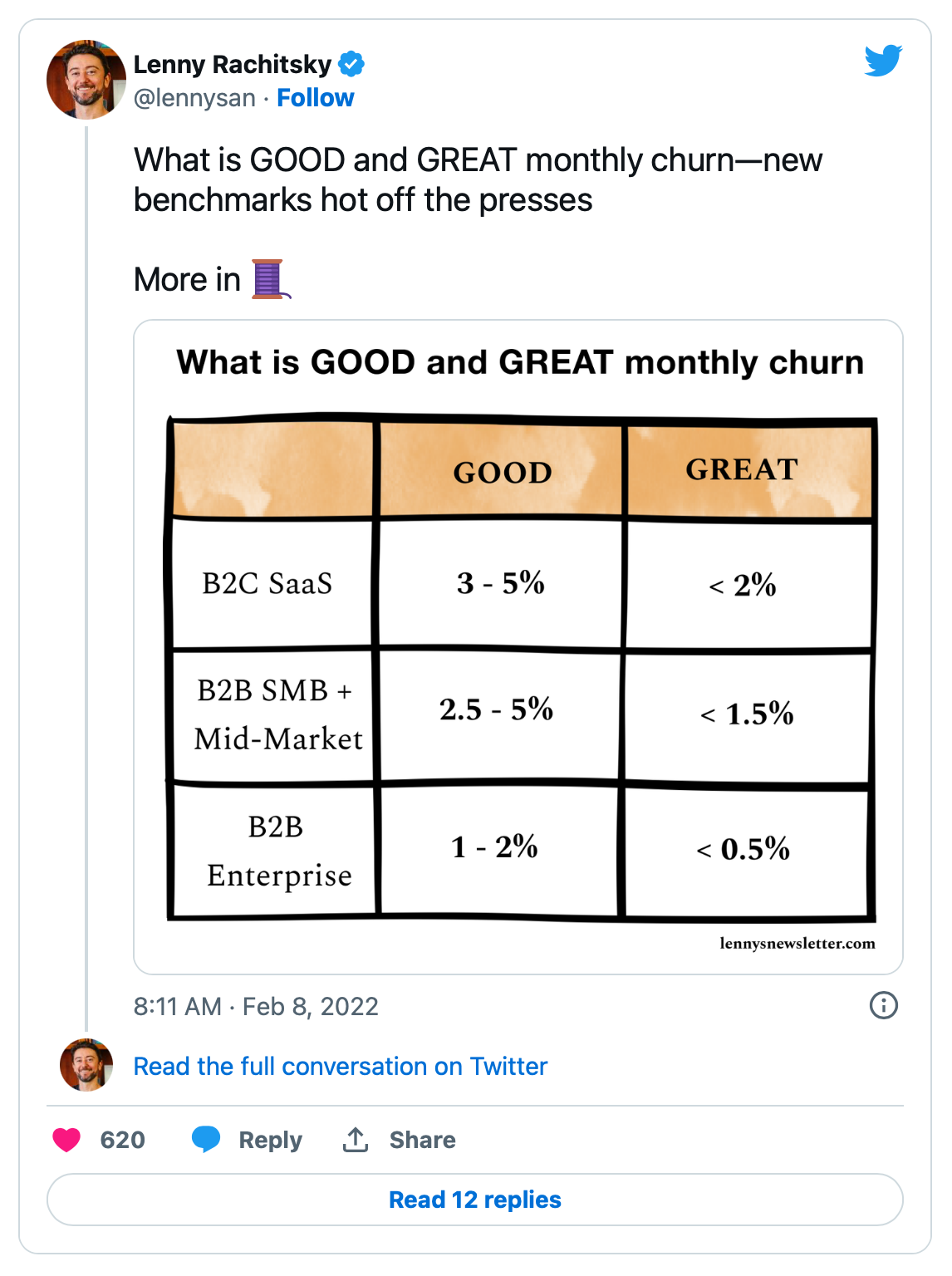
Surprised?
Lesson to Learn — if your churn exceeds the “good” values above, then you have work to do.
Think about it this way. If you’re churning 8% of your customers, all those original customers will be gone in a year.
In a year!
What can you do about churn? Engage with your customers.
Figure out if you’re not aligned. Is it product quality? Fix it. Market positioning? Change it. Product value? Add more value. You get it.
There are many reasons, but unless you engage your customers and commit to taking action, churn will eat your lunch.
Join the ProductFoundry Newsletter
Signup for insights into making great SaaS products and companies.